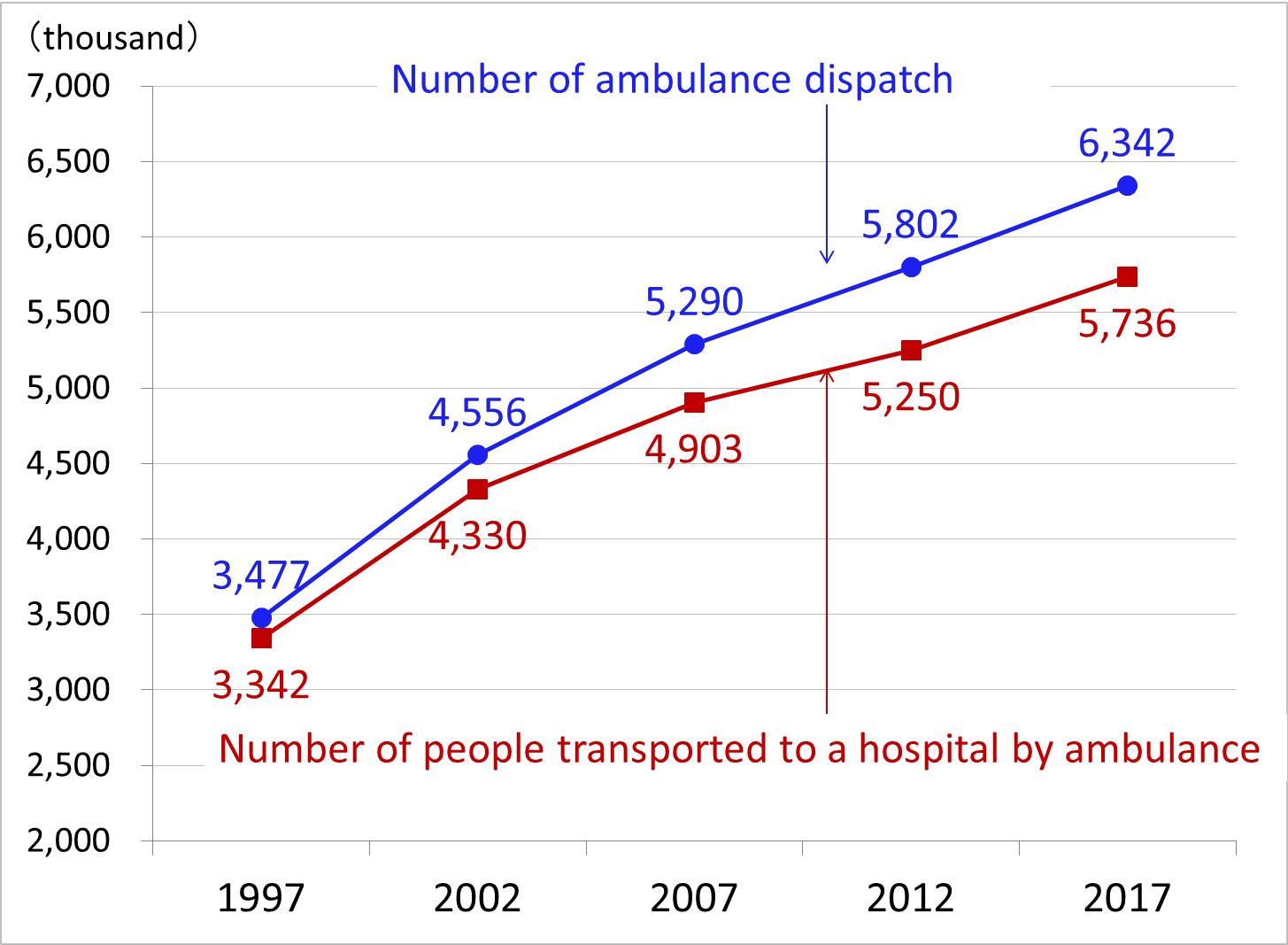Column Finance and the Social Security System 2018.04.10
【Aging, safety net and fiscal crisis in Japan】No.93: Half of Ambulance Patients have Mild Symptoms
In March 2018, the Ministry of Internal Affairs and Communications released the statistics of ambulance cases in 2017. As shown in Figure 1, the number of ambulances dispatched after receiving calls increased from 3,477,000 in 1997 to 6,342,000 in 2017. Along with this, the number of people transported to a hospital by an ambulance also increased from 3,342,000 in 1997 to 5,736,000 in 2017.
The problem is that about half the number of patients transported to a hospital by ambulances have mild symptoms which do not necessarily need an ambulance (Table 1). One of the reasons for people calling for an ambulance despite mildness of symptoms is that the patients are mostly from elderly families. The proportion of elderly people in total emergency patients has increased from 33.9% in 1997 to 58.8% in 2017.
An ambulance being called by a patient having mild symptoms causes a situation where that ambulance cannot be secured to save a serious patient. In other countries, fees are charged when an ambulance is requested, but the emergency is low. Accordingly, a government committee has been formed to examine the option to make patients with mild symptoms pay for an ambulance, but it has not finalized its report yet.

(Source)Ministry of Internal Affairs and Communications


